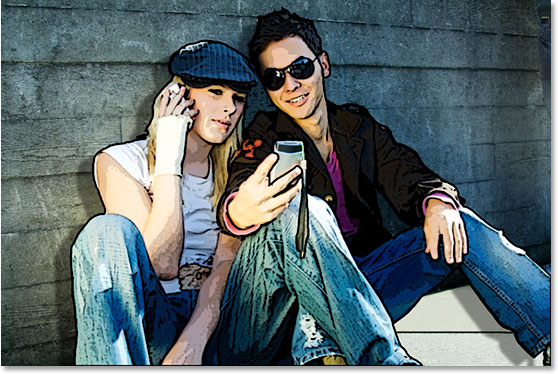Bringing Reality to Life: Creating Rotoscope-Style Paintings in Photoshop

Combining reality with rotoscope-style painting in Photoshop offers a captivating and unique approach to digital artistry. By blending elements of traditional painting with real-life imagery, artists can create stunning compositions that bridge the gap between reality and imagination. In this comprehensive guide, we’ll explore various techniques and methods for combining reality with rotoscope-style painting in Photoshop, from basic adjustments to advanced layering and blending techniques.
1. Understanding Rotoscope-Style Painting:
Rotoscope-style painting is a technique that involves tracing and painting over live-action footage or photographs to create a stylized and artistic interpretation of reality. The term “rotoscope” originates from the animation technique of tracing over live-action footage frame by frame, but in digital art, it has evolved to encompass a broader range of painting styles and techniques. Rotoscope-style painting in Photoshop involves using digital brushes and tools to add painterly effects and textures to photographic elements, resulting in a unique blend of realism and artistic expression.
2. Selecting the Right Image:
The first step in creating a rotoscope-style painting in Photoshop is selecting the right image to work with. Ideally, you’ll want to choose a high-quality photograph with clear, well-defined details and interesting composition. Look for images with strong lighting, dynamic poses, and compelling subject matter, as these elements will provide a solid foundation for your painting.
3. Basic Adjustment Techniques:
Once you’ve selected your image, the next step is to make basic adjustments to prepare it for painting. This may include adjusting the brightness, contrast, and color balance to enhance the overall look and feel of the image. You can also use tools such as the Levels and Curves adjustments to fine-tune the tonal range and contrast, creating a more dynamic and visually appealing image to work with.
4. Painting Over the Image:
With your image prepared, it’s time to start painting! Using Photoshop’s painting tools and brushes, begin tracing over the photographic elements to create a stylized and painterly effect. Experiment with different brush sizes, opacities, and blending modes to achieve the desired look and feel. Pay attention to details such as lighting, shadows, and textures, and use these elements to add depth and dimension to your painting.
5. Layering and Blending Techniques:
As you paint over the image, consider using layers and blending modes to create depth and complexity in your composition. By adding multiple layers and adjusting their blending modes and opacities, you can create interesting effects and textures that enhance the overall look and feel of your painting. Experiment with techniques such as layer masks, blending modes, and adjustment layers to achieve the desired result.
6. Adding Details and Textures:
To further enhance the realism and painterly effect of your rotoscope-style painting, consider adding additional details and textures to the image. This may include adding brush strokes, splatters, or texture overlays to simulate traditional painting techniques. Experiment with different brushes and textures to achieve the desired look and feel, and don’t be afraid to let your creativity shine through!
7. Fine-Tuning and Refining:
Once you’ve completed your rotoscope-style painting, take some time to fine-tune and refine the details. This may involve adjusting the colors, contrasts, and lighting, or making minor tweaks to the composition and layout. Pay attention to the overall balance and harmony of the composition, and make any necessary adjustments to ensure that the final result is visually pleasing and cohesive.
8. Conclusion:
In conclusion, combining reality with rotoscope-style painting in Photoshop offers endless creative possibilities for digital artists looking to explore new techniques and styles. By blending elements of photography with traditional painting techniques, artists can create stunning compositions that blur the line between reality and imagination. So next time you’re looking to create a truly unique and captivating piece of digital art, consider experimenting with rotoscope-style painting in Photoshop and see where your creativity takes you!







